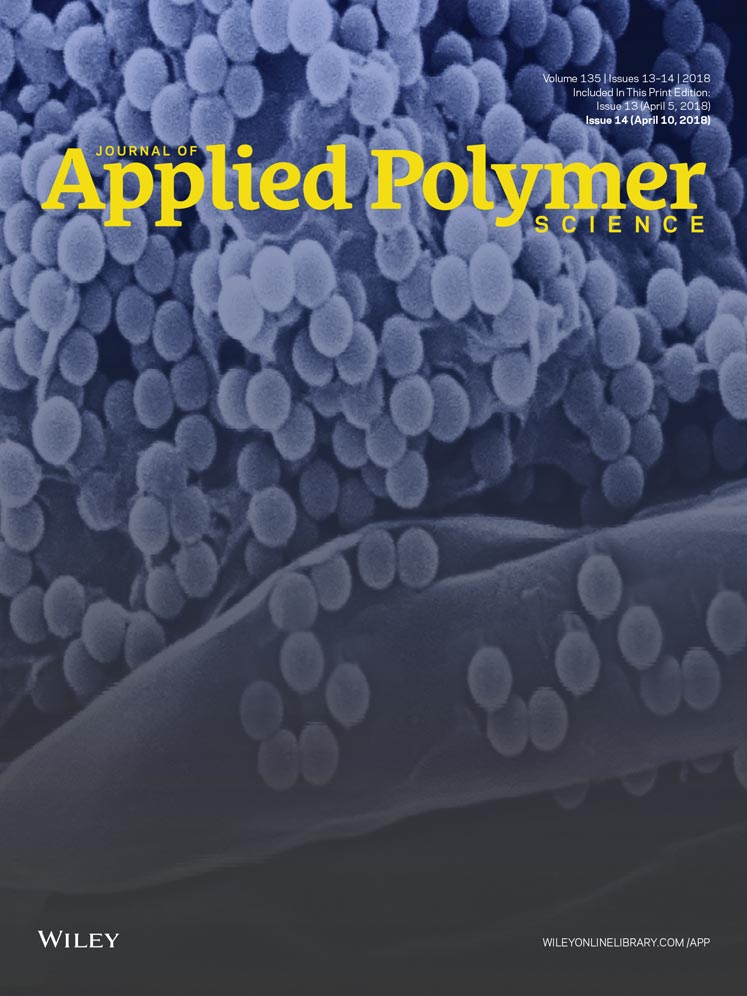Effect of titanium dioxide on the UV-C ageing behavior of silicone rubber
ABSTRACT
The ultraviolet (UV)-C ageing behavior of silicone rubber (SiR) incorporated with titanium dioxide nanoparticles (nano-TiO2) was studied under UV-C radiation. The SiR incorporated with nano-TiO2 displayed excellent physical properties when exposed to UV-C radiation. With the increase of the ageing time, the SiR with nano-TiO2 showed no significant change in crosslinking density and Shore A hardness. Moreover, compared with the SiR without nano-TiO2, the SiR incorporated with nano-TiO2 also exhibited high retention ratio in tensile properties, especially elongation at break. It was found that nano-TiO2 was a good ultraviolet light stabilizer during the UV ageing process of SiR and the optimum content of nano-TiO2 was 2 phr. The results of Fourier transform infrared spectroscopy and X-ray photoelectron spectroscopy showed the appearance of OH and CO and the decrease of the intensity of SiC2O2 in SiR samples during the process of UV-C ageing. Based on these results, a possible UV ageing mechanism of SiR could be proposed. © 2017 Wiley Periodicals, Inc. J. Appl. Polym. Sci. 2018, 135, 46099.




